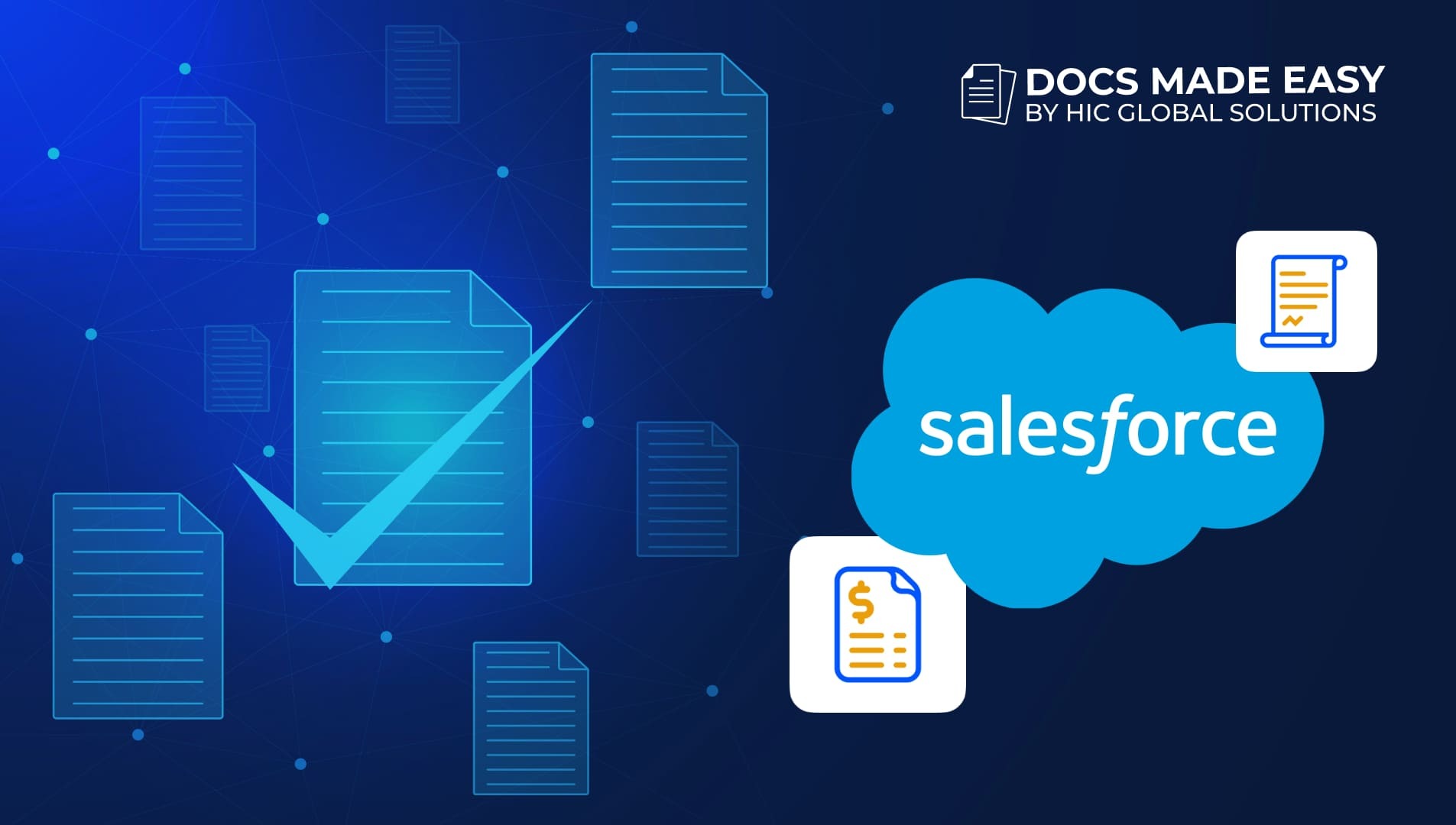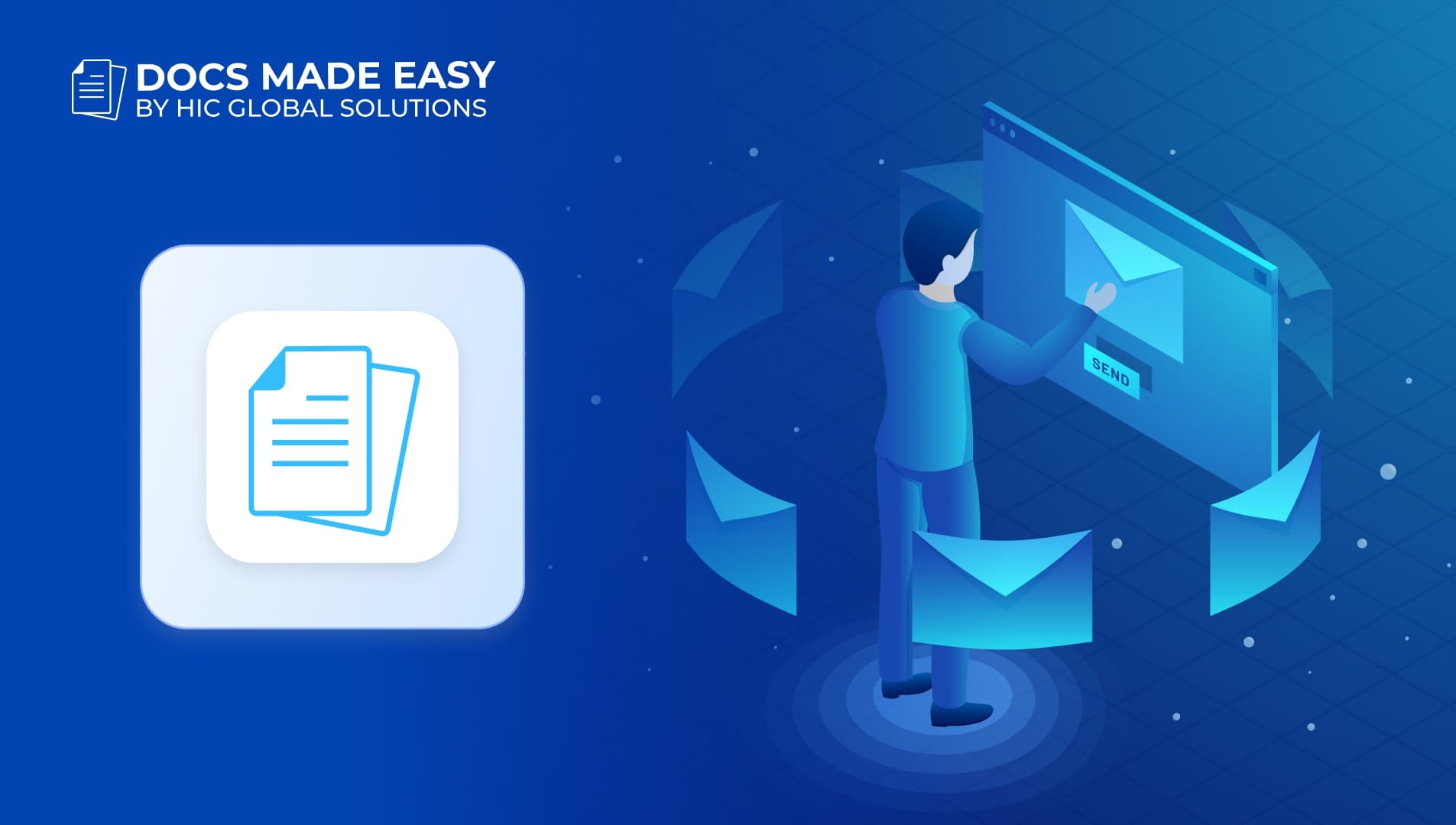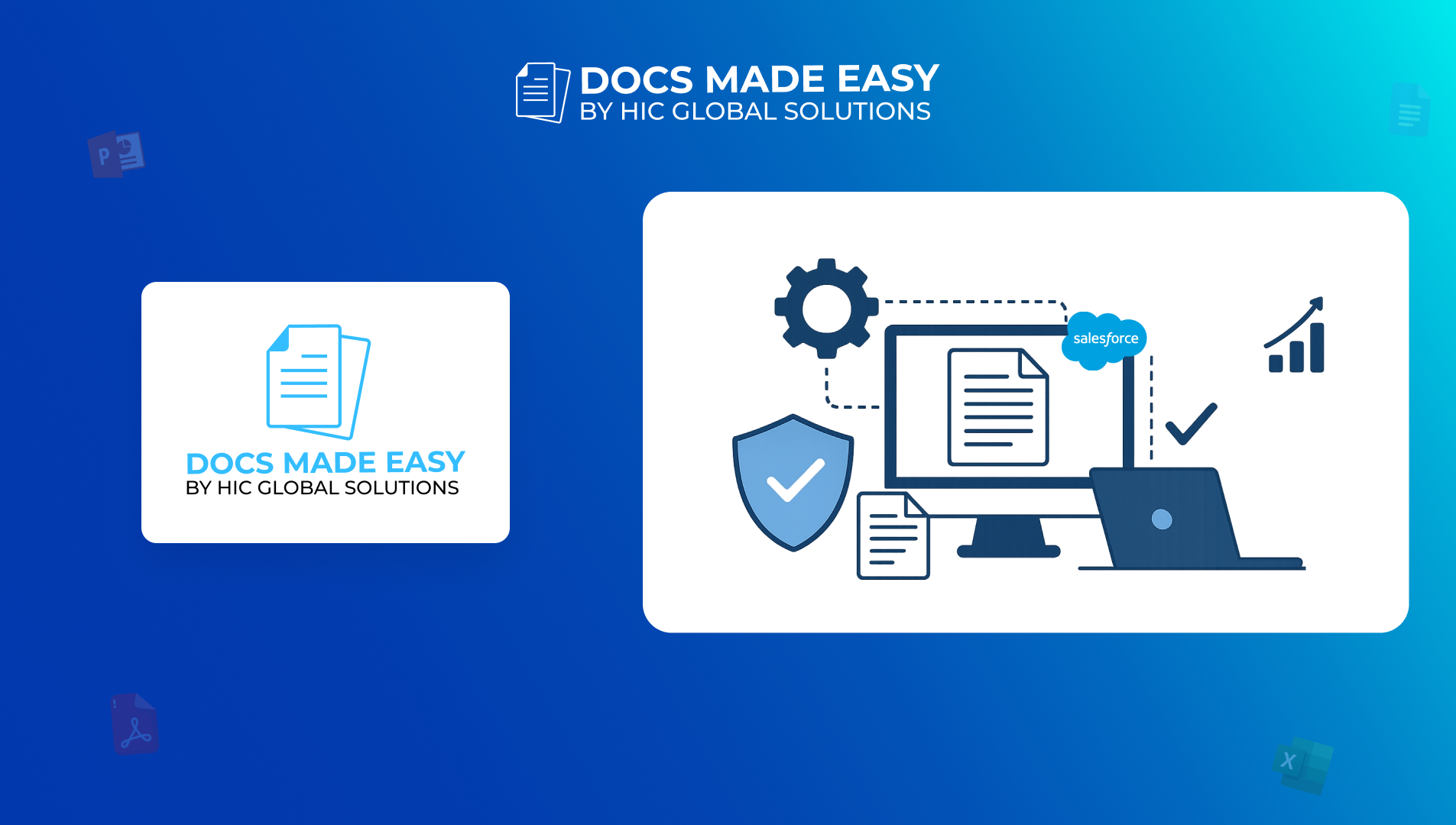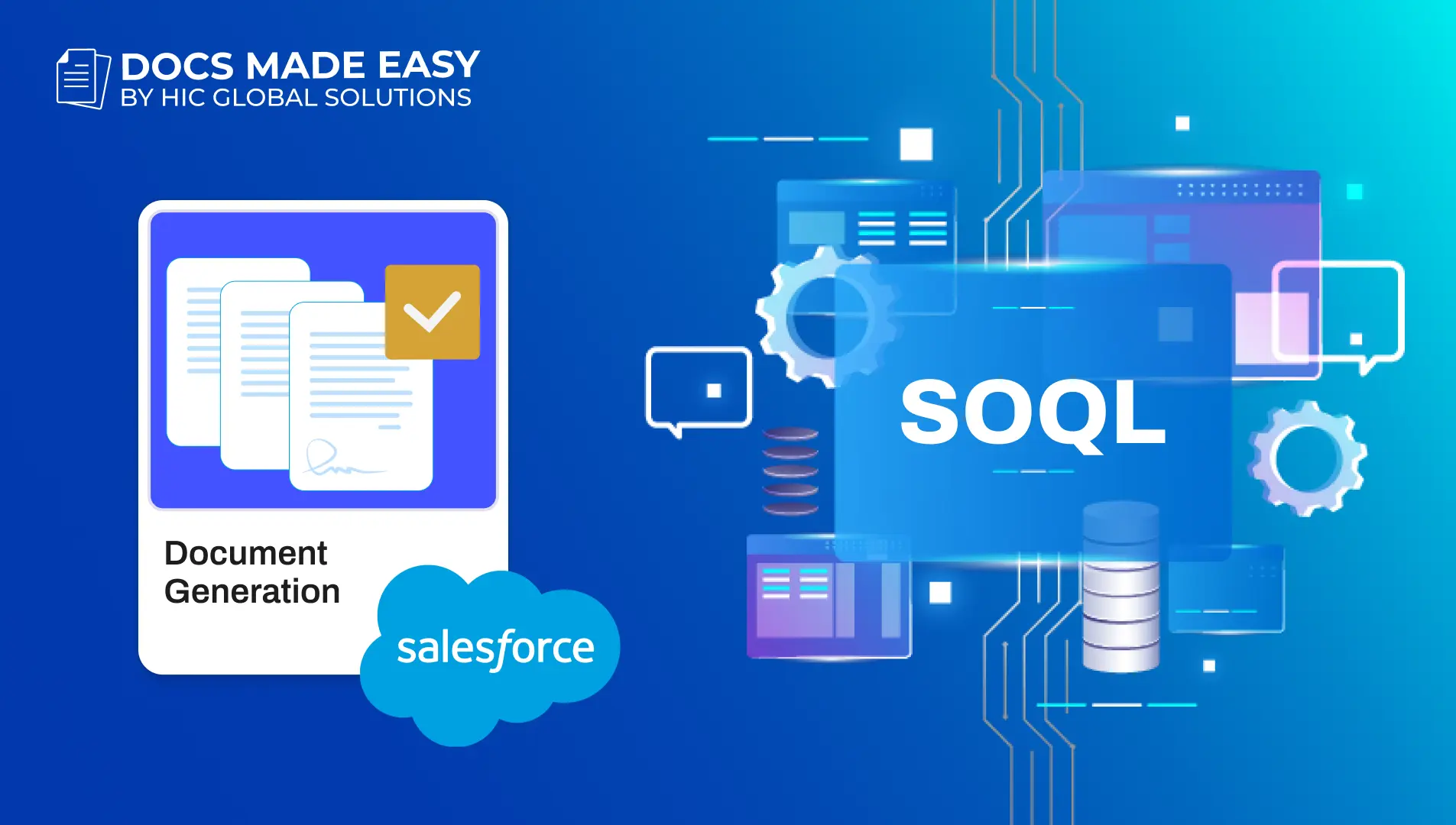Manual document creation is slowing businesses down. Teams spend countless hours preparing documents, whether they are contracts, invoices, or proposals, when they could generate them automatically in seconds. Every manual step increases the risk of errors, delays, and compliance slip-ups that can cost time and trust. That’s where Automated Document Generation comes in.
By using Salesforce to automate the creation, formatting, and delivery of essential documents, organizations can simplify workflows, improve accuracy, and stay compliant with ease.
This guide breaks down everything you need to know about Automated Document Generation from its core concept and benefits to best practices, implementation strategies, and real-world use cases. By the end, you’ll understand how this automation can transform your document process into a seamless, efficient, and compliant system.
What is Automated Document Generation?
Automated document generation is the process of creating business documents automatically by using pre-designed templates combined with data from business systems like Salesforce. Rather than manually entering information into Word documents or PDFs, organizations can generate accurate, professional documents instantly with minimal human intervention.
These documents can range from sales contracts, purchase orders, invoices, and proposals to HR forms, compliance reports, and certificates. Automation ensures that every document maintains consistency in format, branding, and content, reducing the likelihood of errors while accelerating workflows.
A key aspect of automated document generation is its integration with Salesforce’s CRM system. By connecting templates to Salesforce records such as Accounts, Opportunities, or Leads, organizations can dynamically populate relevant information in real-time. This ensures that all generated documents are accurate, up-to-date, and aligned with the latest business data.
Benefits of Automated Document Generation:
- Saves time and increases operational efficiency.
- Reduces errors and ensures data accuracy.
- Improves compliance by standardizing document formats.
- Enhances customer experience through timely, professional communication.
The Growing Role of Automated Document Generation in Business Success
In many industries, the volume of documents generated daily is staggering. According to McKinsey, employees spend up to 19% of their workweek on administrative tasks, such as document creation and data entry. This represents a significant opportunity for businesses to implement document automation and free employees to focus on higher-value tasks.
Automation not only improves operational efficiency but also strengthens compliance. For organizations operating in highly regulated sectors like finance, healthcare, or legal services, maintaining consistent and auditable documents is critical. Automated systems reduce the risk of human errors, ensure adherence to regulations, and maintain a full audit trail for accountability.
Moreover, automated document generation enhances collaboration between teams. When documents are automatically created and routed for approval within Salesforce, departments can work together seamlessly, reducing delays and improving overall business agility.
Key Benefits of Automated Document Generation in Salesforce
Automated Document Generation isn’t just about saving time — it’s about transforming how teams create, manage, and deliver business documents. From speed and accuracy to compliance and customer satisfaction, automation elevates every stage of the document lifecycle.
Streamlined Operations
Manual document creation can take hours, especially when multiple departments are involved. By automating these processes, organizations can significantly reduce turnaround time. Salesforce allows teams to pull data directly from CRM records to generate contracts, quotes, proposals, and reports without switching between different applications.
For example, a sales team can generate a fully customized proposal for a client in seconds by leveraging Salesforce data and predefined templates. This not only accelerates the sales process but also ensures that every proposal is accurate and professional.
Enhanced Compliance
Compliance isn’t just about following rules — it’s about protecting your business and customer trust. With Automated Document Generation in Salesforce, every document is created within a controlled, auditable framework that meets leading global standards such as SOC 2 Type II, GDPR, and HIPAA.
Automation ensures that each document follows pre-approved templates, includes the required legal clauses, and stores complete audit trails of every action — who created, edited, or approved it. This not only simplifies internal and external audits but also reduces compliance risks.
By embedding security and compliance checks directly into document workflows, businesses can safeguard sensitive information, maintain data integrity, and ensure every document aligns with regulatory requirements — without overloading compliance teams.
Improved Document Management
Document management is not just about storage; it’s about organization, accessibility, and version control. With automated document generation integrated into Salesforce:
- All documents are stored centrally within relevant records.
- Users can track document status, revisions, and approvals.
- Version control ensures everyone has access to the latest, most accurate information.
Centralized document management reduces duplication, improves collaboration, and ensures that critical information is always accessible when needed.
Increased Accuracy and Consistency
Human error in documents can lead to miscommunication, financial discrepancies, or legal challenges. Automated document generation eliminates manual entry mistakes and ensures every document follows a consistent format. By standardizing document content, companies can maintain a professional brand image and reduce costly errors.
Enhanced Customer Experience
Customers expect timely and accurate communication. Automated document generation helps organizations respond faster to inquiries, send contracts promptly, and provide professional reports without delays. This improves customer trust, satisfaction, and engagement, ultimately boosting customer retention and revenue.
How Salesforce Supports Automated Document Generation
Salesforce offers several tools and integrations to facilitate document automation:
Salesforce Native Tools
Salesforce provides built-in tools to automate document generation:
- Salesforce Flow: Automates document creation based on triggers such as opportunity closure or account updates.
- Reports and Dashboards: Automatically generate detailed reports that can be formatted into PDF documents.
- Salesforce CPQ (Configure, Price, Quote): Enables automatic quote and proposal generation with pre-approved templates.
Third-Party Apps
The Salesforce AppExchange offers powerful apps to streamline document generation:
- Docs Made Easy: A 100% native Salesforce app designed to simplify and automate document generation with precision and security. Docs Made Easy supports compliance standards like SOC 2
- DocuSign: Automates contract signing workflows and ensures secure document storage.
- Conga Composer: Generates highly customized documents, reports, and presentations using Salesforce data.
- S-Docs: A native Salesforce document generation solution with advanced automation, security, and compliance features.
AI-Powered Automation
AI integrations with Salesforce enhance document automation by:
- Auto-populating fields based on historical patterns.
- Suggesting the most relevant document templates for each scenario.
- Optimizing approval workflows to reduce bottlenecks and accelerate processing times.
Best Practices for Automated Document Generation
Adopting automation is only half the journey — optimizing it is what delivers lasting impact. Following these best practices ensures your Automated Document Generation process in Salesforce stays accurate, compliant, and effortlessly efficient.
- Standardize Templates: Ensure uniform branding, legal language, and formatting across all documents.
- Map Data Accurately: Use dynamic fields to reduce manual input and errors.
- Automate Approvals: Route documents for review to maintain compliance and accountability.
- Maintain Audit Trails: Track document creation, edits, and approvals to satisfy regulatory requirements.
- Train Employees: Ensure all users understand the automation workflows and best practices.
- Regular Updates: Periodically review templates and automation rules to stay compliant and efficient.
Real-World Use Cases
Automated Document Generation in Salesforce isn’t just theoretical; it’s transforming how teams work every day. Here are practical examples of how different departments benefit from faster, more accurate, and compliant document workflows.
Sales and Marketing
Sales teams can automatically generate proposals and quotes using Salesforce data. For instance, once an opportunity is marked as “Closed-Won,” Salesforce can trigger a fully formatted contract to be sent to the customer, reducing turnaround time and increasing conversion rates.
Finance and Accounting
Invoices, receipts, and payment reminders can be automatically generated, ensuring accuracy and timeliness. Automation helps finance teams maintain compliance with accounting standards and reduces manual workload.
Legal and Compliance
Legal departments can generate contracts, NDAs, and regulatory forms automatically, maintaining consistency and audit trails. This is critical for industries with strict compliance requirements, such as healthcare, finance, or government sectors.
Human Resources
HR teams can automate offer letters, employment contracts, and onboarding documents. This ensures a faster and smoother employee experience while reducing administrative overhead.
Conclusion
Automated document generation in Salesforce is no longer just a convenience- it is a strategic necessity. By integrating document automation and document management into Salesforce workflows, organizations can streamline operations, reduce errors, ensure compliance, and enhance the overall customer experience.
Whether your team is in sales, finance, HR, or legal, adopting automated document generation ensures that your organization operates more efficiently and can focus on driving growth rather than managing paperwork. Businesses that embrace automation today will be better prepared for the challenges of tomorrow, achieving operational excellence and compliance success.
Frequently Asked Questions
Related Blogs

8 Practical Ways to Leverage Salesforce Document Generation Beyond Quotes & Contracts




